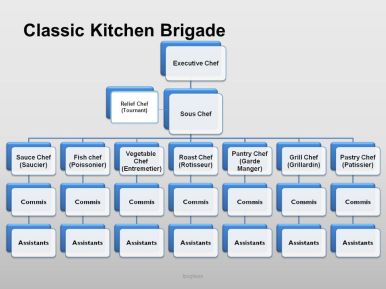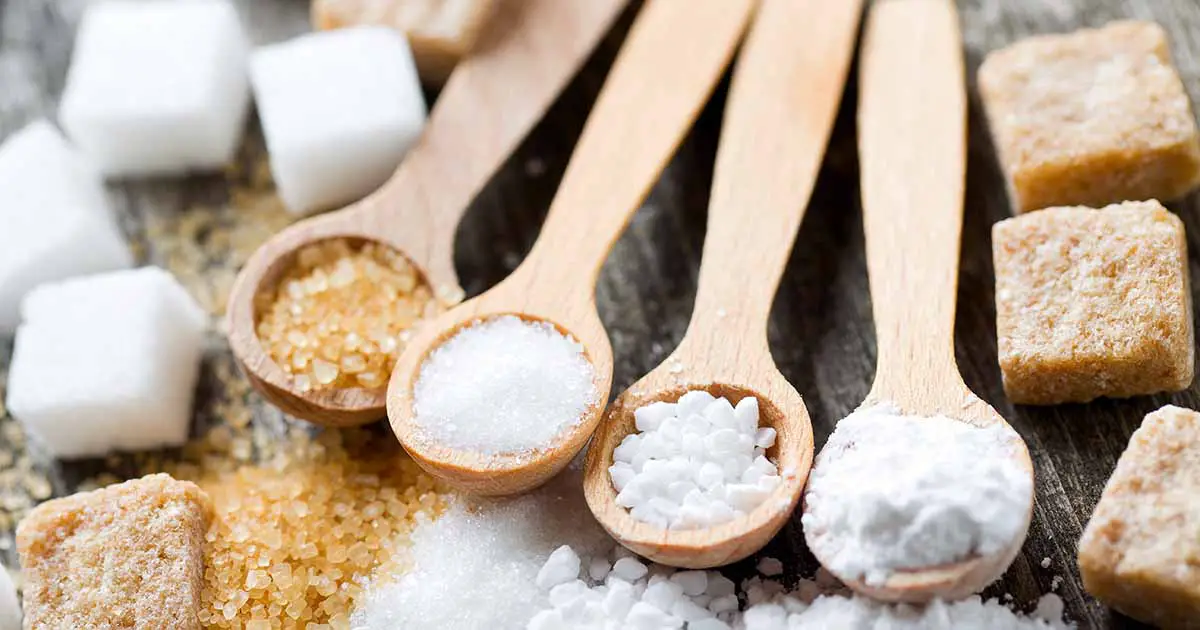The Classical Kitchen Brigade

As you learned earlier in this chapter, one of Escoffier’s important achievements was the reorganization of the kitchen. This reorganization divided the kitchen into departments, or stations, based on the kinds of foods produced.
A station chef was placed in charge of each department. In a small operation, the station chef may be the only worker in the department. But in a large kitchen, each station chef might have several assistants. This system, with many variations, is still used today, especially in large hotels with traditional kinds of foodservice.
The major positions of the classical kitchen brigade are as follows:
1. Chef
The chef in the kitchen brigade is the person in charge of the kitchen. In large establishments, this person has the title of executive chef. The executive chef is a manager who is responsible for all aspects of food production, including menu planning, purchasing, costing, planning work schedules, hiring, and training.
2. Chef De Cuisine
If a foodservice operation is large, with many departments (for example, a formal dining room, a casual dining room, and a catering department), or if it has several units in different locations, each kitchen may have a chef de cuisine. The chef de cuisine reports to the executive chef.
3. Sous Chef
The sous chef (soo shef) in kitchen brigade is directly in charge of production and works as the assistant to the executive chef or chef de cuisine.(The word “sous” is French for “under.”) Because the executive chef’s responsibilities may require a great deal of time in the office, the sous chef takes command of the actual production and the minute-by-minute supervision of the staff.
4. Station Chef/Chef De Partie (CDP)
The station chefs, or chefs de partie, are in charge of particular areas of production. The following are the most important station chefs.
• The sauce chef, or saucier (so-see-ay), prepares sauces, stews, and hot hors d’oeuvres, and sautés foods to order.This is usually the highest position of all the stations.
• The fish cook, or poissonier (pwah-so-nyay), prepares fish dishes. In some kitchens, this station is handled by the saucier.
• The vegetable cook, or entremetier (awn-truh-met-yay), prepares vegetables, soups, starches, and eggs. Large kitchens may divide these duties among the vegetable cook, the fry cook, and the soup cook.
• The roast cook, or rôtisseur (ro-tee-sur),prepares roasted and braised meats and their gravies and broils meats and other items to order. A large kitchen may have a separate broiler cook, or grillardin (gree-ardan),to handle the broiled items.The broiler cook may also prepare deep-fried meats and fish.
• The pantry chef, or garde manger (gard-mawn-zhay), is responsible for cold foods, including salads and dressings, pâtés, cold hors d’oeuvres, and buffet items.
• The pastry chef, or pâtissier (pa-tees-syay), prepares pastries and desserts.
• The relief cook, swing cook, or tournant (toor-nawn), replaces other station heads.
• The expediter, or aboyeur (ah-bwa-yer), accepts orders from waiters and passes them on to the cooks on the line.
The expediter also calls for orders to be finished and plated at the proper time and inspects each plate before passing it to the dining room staff. In many restaurants, this position is taken by the head chef or the sous chef.
5. Cooks and Assistants
Cooks and assistants in kitchen brigade at each station or department help with the duties assigned to them. For example, the assistant vegetable cook may wash, peel, and trim vegetables. With experience, assistants may be promoted to station cooks and then to station chefs.
You can also look at the : A Typical commercial kitchen layout




